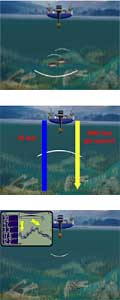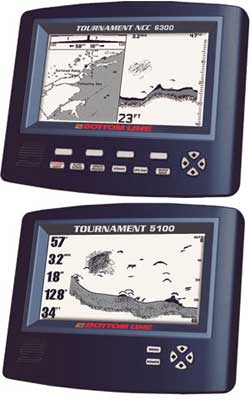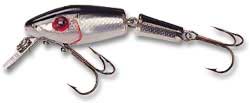Finding Sea Trout on Deep Drops
Finding Sea Trout on Deep Drops
By Jim Hammond
It is that time of the year when trout start to hold near bait pods and this is usually around deep drops. To find these special places, you are going to need a good recorder, fish finder.
I have always been a firm believer that a good fish finder (sonar) is essential to finding little humps, rock piles and small concentrations of bait fish. Your fish finder should have a good clear picture, show a good resolution and be dependable.
One very important thing to know is, how to use your fish finder (sonar), how it works and what you should expect to see on the screen. These are all very important when using it to locate fish and subtle bottom changes.
Here are some questions and answers on fish finders (sonar). Understanding how your unit works and what you are seeing on the screen is an important part of this kind of fishing.
How Sonar Works.
 Greatly simplified, a sonar unit is just a combination of a speaker, microphone and stopwatch.
Greatly simplified, a sonar unit is just a combination of a speaker, microphone and stopwatch.
Every fish finder is programmed to "know" that the speed of sound through water is about 4800 feet per second. Using a transducer, fish finders transmit a sound pulse, or ping, and then measure the time it takes for echoes to return from the ping. Then they convert the elapsed time for each ping into distance. A built-in computer organizes all of this information and shows it on a display screen.
Conventional bottom-finding sonar uses a transducer to send ultrasonic sound waves, or pings, down through water. The pings bounce off the bottom, and objects such as fish, and are received back by the same transducer.
A sonar ping travels at a rate of approximately four thousand eight hundred feet per second. The Unit can monitor the time it takes for each ping to go out and come back, and accurately calculate the distance to underwater objects.
Once the distance is determined, it can be plotted on a screen, one ping at a time, to draw a historical picture of the bottom contour, and the location of fish and other objects that pass under your boat.
Pixels. Why are they so important?
The word "pixel" is short for "picture element". Pixels are the elements that the picture on a fish finder's screen is made from. Liquid crystal displays are really checkerboard-like grids of tiny dots (pixels) that darken individually when electricity is applied to them. A fish finder's computer forms the picture on its screen by darkening selected pixels and leaving others "blank".
The number of pixels on a unit's screen determines how much detail it can show. Remember that pixels are arranged in columns and rows. The more pixels a screen has in each vertical column, the less depth each pixel represents and therefore the higher the resolution. If a screen has 100-pixels in each column and you search for fish on the 0- to 50-foot depth range, each pixel represents 6 inches of depth (50 feet divided by 100 pixels equals ½ foot per pixel). A picture made with 6-inch building blocks isn't going to have a lot of detail. Take a Bottom Line® model with 240 pixels in each vertical column, and each pixel represents about 2½ inches of depth. Smaller changes in the bottom contour and subtle details in the structure features spring into view, giving you, the angler, better information.
The number of pixels in each horizontal row determines how long information stay on the screen before it scrolls off. This is especially important for units to show side-by-side displays of different kinds of information. Wide-screens, such as the Bottom Line Tournament NCC 6300 and the Tournament 5100, allow information to stay on the display a normal length of time even when the screen is split into separate features.
Fish arches. Now you see them, now you don't. Why?
The importance of seeing fish as perfect boomerang-shaped arches on the screen has been greatly exaggerated over the years. It all has to do with how fish arches are created.
Imagine sitting in an anchored boat with your fish finder turned on. Picture in your mind the transducer's cone-shaped scanning area under your boat. In order to print a perfect arch, a fish will have to enter the edge of the cone, swim directly across the middle, and pass out of the cone.
Let's say the fish holds a constant depth of 15 feet as he swims straight across the cone. The unit measures the distance to an object and starts to print out on the display; it's 15 feet below the surface of the water but probably 16 feet from the transducer. As the fish swims through the center of the cone, it passes 15 feet below the transducer. When it reaches the edge of the cone again, it's 16 feet away just before it stops printing on the screen. This causes an arch to start at 16 feet, curve up to 15 feet, then curve back down to 16 feet. The wider the cone angle, the more exaggerated the arch.
If the fish changes depth, passes through only one edge of the cone, or wonders around under the boat before swimming off, it won't print as a perfect arch.
Power. Why is it so important?
The output power of a fish finder's transmitter is stated in watts RMS or in watts peak-to-peak (P-P). The two terms represent different ways to advertise output power, and all you need to know to compare units that advertise different ratings is that P-P equals watts RMS times 8.
Power's importance is based on the perception that more power always produces a better echo. In reality, it is the combination of the unit's power and receiver sophistication that determines the unit's ability to find a fish and display an accurate image.
Which is better, wide or narrow cone angle?
Bigger is not necessarily better. A transducer with a wide cone angle scans more water as your boat moves along and can fish and structure features faster, but this advantage can also work against you. The wide cone may cover two or three important stumps on the bottom, for instance, and the lump their reading together, makes it impossible to see just the one with fish next to it.
A narrow cone zeroes in on fish and can detect small details on structure features that fish may relate to. Focusing the transducer's power into a narrow beam also concentrates the sound output, enabling it to reach greater depths. A disadvantage to a narrow cone angel is that it scans smaller amount of water as the boat moves along.
Bottom Line strives for the best of both worlds by using a transducer with a medium cone angle and automatically manipulating receiver sensitivity and echo filtering to provide wider coverage in shallow water and narrower, more detailed coverage in deeper water. Add the advantage of multiple transducer beams that look to the side as well as straight down, each with its own separate display, and it's easy to tell where fish are in relation to your boat.
How do I interpret what I am seeing on my fish finder display?
Some anglers don't stop and fish areas unless they see fish on the screen; this limits their success. Areas loaded with weeds, brush and submerge trees are great spots even if no fish are obvious. Developing the skill to see fish-attracting cover is as important as being able to identify individual fish on the screen.
Any object that is different in density from water can return a sonar echo. It's the density difference that determines the strength of an object's echo. Clumps of weeds and branches of submerged trees poking into the cone angle have different densities, and return different echoes.
It's often been said that 90% of the fish are in 10% of the water. Vast areas of any body of water are barren of fish, and fishing them is a waste of time. One great benefit of fish finders is their ability to help you bypass water that contains no cover, no baitfish and no lumps on the bottom that could be game fish. Ironically, one of their great benefits is showing you where NOT to fish.
How do I tell what kind of bottom I'm marking?
Generally speaking, a hard bottom will be indicated with a thicker (top-to-bottom) contour line because it reflects most of a transducer's sound pulse. A soft, mucky bottom will absorb sound and return a weaker echo, resulting in a thinner contour line. However, a feature Bottom Line® calls GrayScale makes it easier to see the difference between hard and soft bottoms. All Bottom Line units display GrayScale to indicate very strong reflections from the bottom. The thicker (top-to-bottom) the checkering, the harder the bottom.
 Now that you understand what your unit is doing, how it works and what you are actually seeing on the display, I will go into what you should look for while in search of deep drop trout. I NEVER look for a single fish and rarely even pay any attention to a single fish that is displayed on the screen. When your unit shows one fish (arch or fish id) this fish can be cruising and most of the time you have no idea which direction it is going and you could spend valuable time trying to go back and find this single fish. You are not looking for a single fish, you are looking for structure on the bottom that provides a current brake or is holding bait.
Now that you understand what your unit is doing, how it works and what you are actually seeing on the display, I will go into what you should look for while in search of deep drop trout. I NEVER look for a single fish and rarely even pay any attention to a single fish that is displayed on the screen. When your unit shows one fish (arch or fish id) this fish can be cruising and most of the time you have no idea which direction it is going and you could spend valuable time trying to go back and find this single fish. You are not looking for a single fish, you are looking for structure on the bottom that provides a current brake or is holding bait.
These pictures show bait up off of the bottom, fish that we are after near the bottom and a contour change in the bottom. THIS is what you are looking for.
The fish that we are after are almost always going to be holding on the outside of the bait pods.
To find places like this, you will need to do some riding and searching (put in your time). I like to concentrate on places like points near deep water, sharp bends in the creeks or river, in the channel where there is hard bottom and in almost every junction where two or more creeks come together.
When searching for these spots, come down to an idle, turn on your fish finder and be ready to mark the spot. If I am in an area where the is land in sight, then I will have several places (trees, docks, crab traps, points) to use a reference points to mark your spot. If you are in open water or you think that you might want to have the spot marked with a marker buoy try the new Bandit Buoy. Or check out their web site at www.americanbandit.com/bouy.html .
Now that you have found a good spot that holds bait and larger fish, it is time to fish. You can either drop your MotorGuide trolling motor in the water and use it to work this area or you can go up current and ease your anchor over so your boat is about fifty feet or so from the concentration of bait. When putting your anchor down, it is important to ease your anchor over the side GENTLY. DO not throw it.
You have found a good spot and you now need a bait and a presentation to get some fish to stretch your string. You can use plugs, deep diving crank baits like the MirrOlure Crank Baits.
 Try to remember what the bottom looked like, Where the bait is, where the hump is and where the fish were in relation to the bait. This is important as you want to work your lure through the bait and in the direction of the fish. The fish will think that a bait has strayed from the school and you will surely get the fishes attention. You will want to work your lure as if it is injured. Work it slow with an occasional jerk or pause. These erratic movements will draw a strike from the fish that you are targeting. For the spinning rod folks, a good combination is the Shakespeare Tidewater reel with the Intrepid 7 foot long medium action rod. If you spool the reel with Power Pro 10 pound test, the lure will dive deeper and you will be able to feel the bottom as your bait bounces along.
Try to remember what the bottom looked like, Where the bait is, where the hump is and where the fish were in relation to the bait. This is important as you want to work your lure through the bait and in the direction of the fish. The fish will think that a bait has strayed from the school and you will surely get the fishes attention. You will want to work your lure as if it is injured. Work it slow with an occasional jerk or pause. These erratic movements will draw a strike from the fish that you are targeting. For the spinning rod folks, a good combination is the Shakespeare Tidewater reel with the Intrepid 7 foot long medium action rod. If you spool the reel with Power Pro 10 pound test, the lure will dive deeper and you will be able to feel the bottom as your bait bounces along.
If you want to float a bait back to the fish, then I suggest hat you use the conventional float rig, but you will probably have better success casting a jig or crank bait. Remember to fish slow, changing the retrieve and action. You need to try to convince the fish that your bait is an injured fish, otherwise the fish might nit try to catch it.
It is reel important that you do not anchor on the hump, bait or fish.
|
